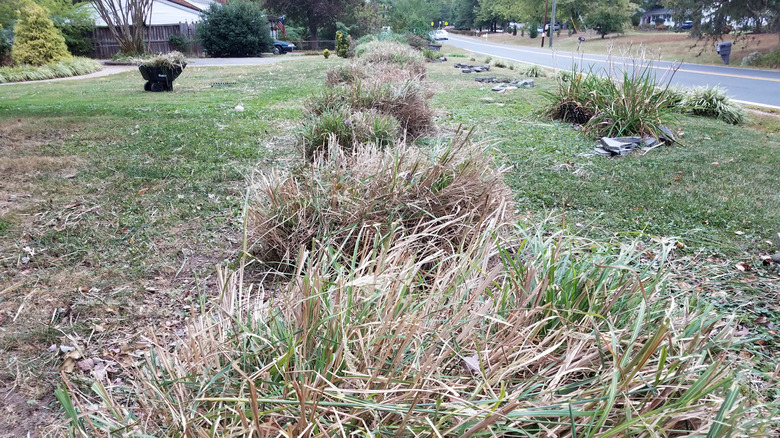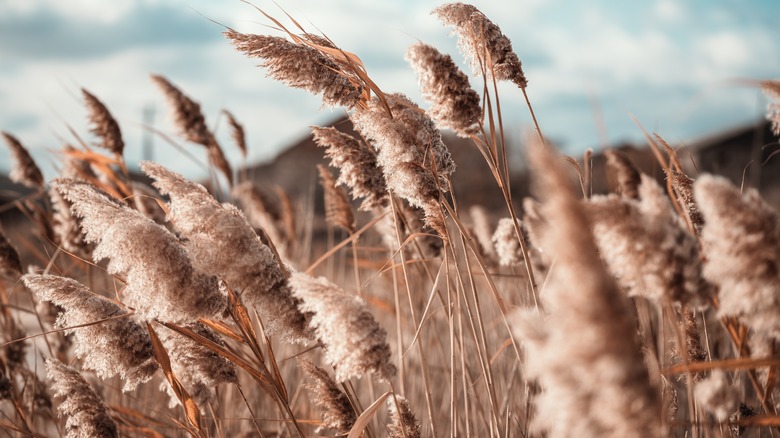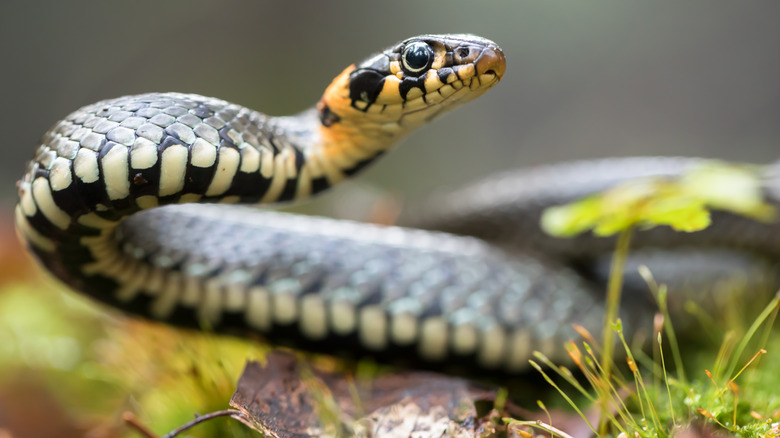Snakes love to hide in taller grass where they can wait and stalk their prey and hide from birds who may be hunting them. Most often, backyard lawns don’t get tall enough to actually create enough visual protection like this, which is why you may find them hiding in holes or under logs instead of in your lawn. However, if you have ornamental grasses, especially pampas grass, you’ve got the ideal hiding place. Even though this type of ornamental grass has gained popularity in its beautiful, showy display, you’ll want to look for signs of snakes, including shed skin, feces, and snake holes.
Native to South America, pampas grass (Cortaderia selloana) can reach as high as 10 feet, and patches can easily fill your flowerbeds since they can spread more than 6 feet wide. They’re most notable for their thick flowers that have a dramatic white, silver, and pink color and a feather-like appearance to them. This grass brings height to any landscape design.
That height, coupled with the larger and thicker base of this plant, makes for a good hiding place for snakes. If you’re planning to use it in your landscaping, it’s a good idea to keep it controlled and to use a few extra steps to minimize a snake’s desire to call this its new home.
Properly caring for pampas grass can minimize snake risks

You don’t have to give up using this stunning ornamental plant in your landscaping just because you want to keep snakes at bay, but you do need to know how to care for pampas grass well. Start with a good pruning and cleaning out during the fall months. Pampas grass grows quickly and typically doesn’t need a lot of hands-on care during the growing season. However, when the foliage begins to dry during the fall months, it’s time to cut it back, leaving no more than about 8 inches of the plant’s fronds present. That may seem drastic, but it will help them to grow back in the spring. While pruning, take it one step further and clean out all of the dead organic material at the base of the plant. This is the ideal time to do a significant chop since the plant is entering its dormant period.
Don’t make the mistake of burning the stubs, though. This will create a matted material under the plant that will encourage snakes to hide. It’s also a good idea to remove any clumps or sprouts that have popped up outside of the main area. This is how the plant spreads, but keeping it more controlled minimizes the snake-like habitat. Without enough foliage to hide under, the snakes will move on.
Make the area less snake friendly

Once the spring months come and this ornamental grass begins growing, you’ll need a few extra tips to minimize snakes and pests. The goal should always be the same: remove the habitat risks, eliminate any food source, and bring in more natural predators to target the unwanted snakes. Starting with a smaller, cleaned-up grass plant is the first step. Make sure to remove any leaves or other debris from the winter months that could be compacting around the base of the plant.
Work to eliminate food sources from the area, including the presence of rodents (attracted by bird feeders in your yard, luring in snakes after them). Work to improve the drainage around the plant, too. Pampas grass does best in well-draining soil, which is also less likely to attract snakes who prefer moist environments for their nests. Keep wood piles and mulch away from these plants, too. Mow your lawn around the plants, as that will limit the amount of space they have to hide.
If you’re really worried about snakes near your ornamental grass, consider adding a snake-proof fence around the exterior of your property. This type of fence will keep snakes out without requiring you to trim back the beautiful foliage and plumes created by pampas grass. Even then, it’s always a good idea to look carefully before you stick your hand into these plants.




